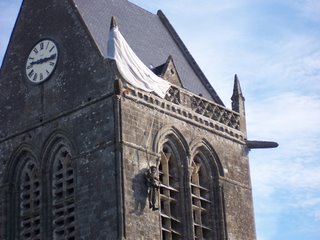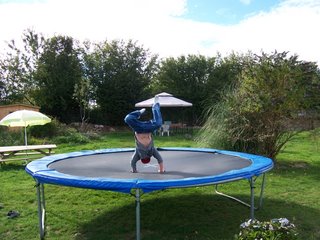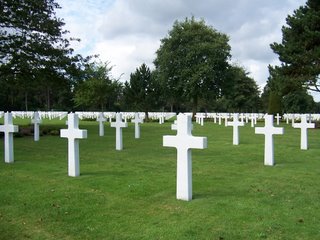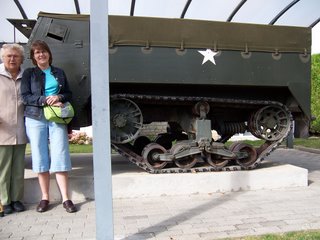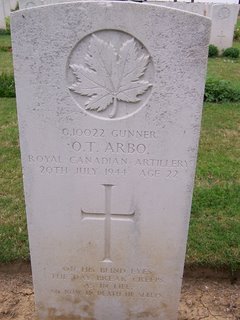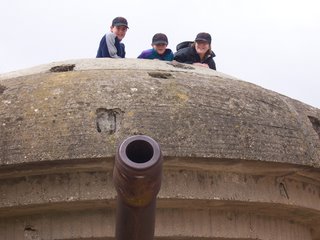Monday the 28th we went to the openluchtmuseum (open air museum) in Arnhem (about an hour drive south). This time I brought the camera, but forgot the battery in the charger back at the house. I think the wet soggy countryside is affecting my memory!
At the open air musuem they have a large collection of farms, homes, businesses, windmills, ... from all across the country. Over the years they have bought many buildings, dis-assembled them, and then re-assembled them on their site. It is very well laid out with many of the staff dressed in period costumes, cooking over a fire and or doing whatever, and prepared to talk to you about the building and the time period. It was fascinting to see a couple of hundred year old home with the living quarters for the people and animals in the same building, and the small sleeeping bunks that ring the cooking area. No chimney for the fire either in order to smoke and keep dry the meat and food hanging in the rafters. We saw how they would grind oil seeds in a horse powered mill, climbed high into a windmill, and Nancy was taken back to when whe was a little girl when she saw the snybona (sp?) machine, similar to the one that her family used to prepare beans for canning.
One of the highlights was seeing the home that Johan had owned and renovated. After Johan sold the home, the next home owner sold it to the museum as it was going to be demolished in order to make way for a new high speed rail line.
It was quite rainy today but thankfully we came prepared with our umbrellas. When the rain cleared, we made a coffee and bakery visit and the boys had fun riding the hand powered carts and the penny farthing bicycles. When we tired of walking we enjoyed our trips on the early 1900 electric streetcars and even splurged on a dress up photograh of us in 1910 period European clothing.
We had meant to see other sights in the area today but didn’t finish in the museum until late afternoon so we had dinner in Arnhem and then took the slow road home through the countryside back to Zwolle.
Tuesday the 29th we were back to in the Arnhem area (specifically Grosebeek) to visit the Canadian War Graveyard and the Nationaal Bevrijdingsmuseum (National Liberation Museum) Given the significance of the liberation to Nancy's family, it was very important to both of us to spend some time here.
It rained, nay it poured, for a good portion of the trip. Particularly near Arhem it was a severe storm with lightning, heavy rain, and even some hail on the grass at the graveyard. I was sure hoping it would slacken off or we would be a very unpleasant visit to the graveyard. And it did, there was light rain for the first bit than the sun came out and we put away the umbrellas.
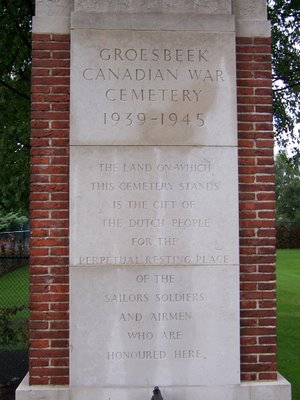
There are over 2300 Canadians laid to rest in the cemetary. Many of them were airmen from the RCAF. Other soldiers we noted were killed on the same days in February and March and were from the same unit, obviously involved in very serious engagments. We spent quite a bit of time wandering and reflecting among the rows reading their names, unit, date of death and any inscriptions on their tombstone from the family. Many tombstones had personal memorials from family left on on the ground in front of the stone, or in one case, even affixed to the stone.
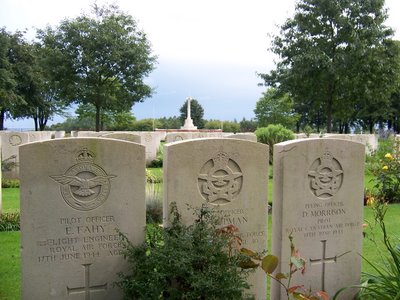 I found these 3 markers to be quite unique. They were grouped tightly together unlike any others, they were all airmen and all died on June 17, 1944. My suspicion is that they were all killed together in the same aircraft.
I found these 3 markers to be quite unique. They were grouped tightly together unlike any others, they were all airmen and all died on June 17, 1944. My suspicion is that they were all killed together in the same aircraft.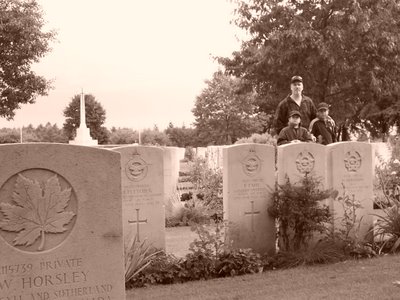
A short distance away is the National Liberation Museum that we went to next. It's an older musuem, and a tad cheesy, but it does a fair job of walking you through the rise of Nazism in Germany, the invasion of Holland and the subsequent impact on the country, Operation Market Garden (anyone ever see "A Bridge Too Far"), the eventual liberation and the rebuilding of the country. While we were outside the rain thundered down, but as we emerged, the rain tapered off and again we were treated to that elusive NL sunshine.
Groesbeek is only a few km's from the German border, the boys wanted to see Germany, and we wanted to tick it off our list and make it 5 European countries that we visited on our vacation. I think we were only in the country for 15 minutes. Long enough to take a picture of a unique building and some photos at the border.
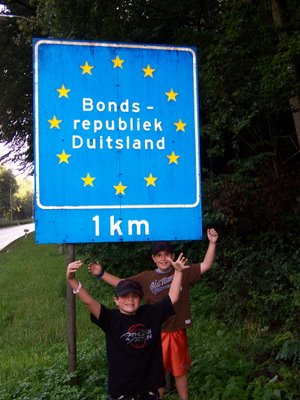
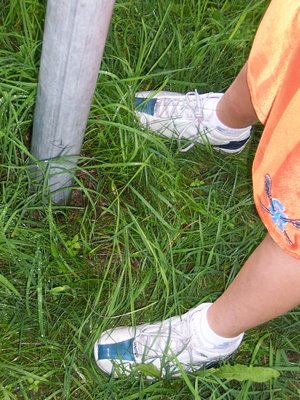
Jonas wanted a picture with one foot in each country
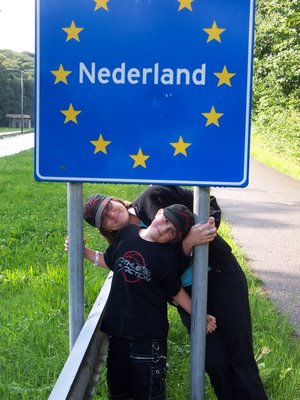
After supper it was too nice an evening to not go for a bike ride. Nancy made an valiant effort to get wheel borne, but after landing in two different neighbours hedges we decided that I would double her on the back of mine. We had a great time.
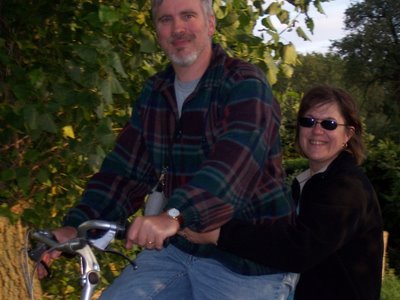
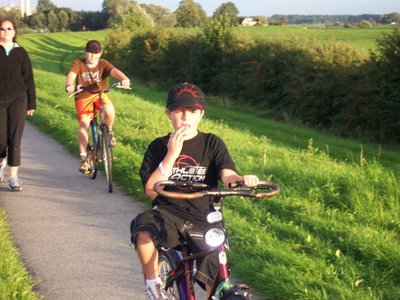
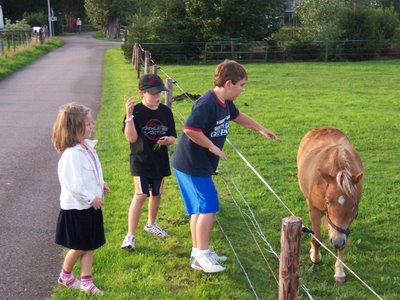 Gideon, Jonas and Malou
Gideon, Jonas and Malou 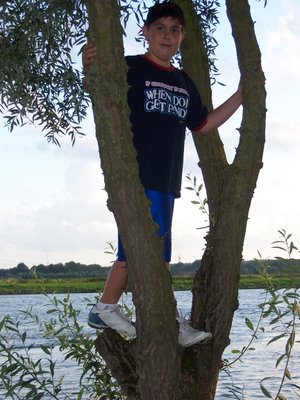
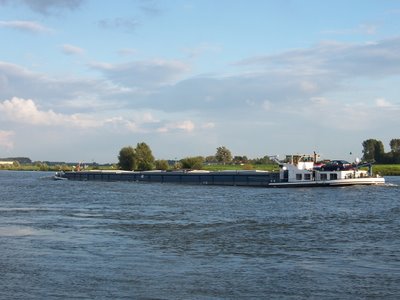 A typical European barge. Note the owner/family's car perched above the stern.
A typical European barge. Note the owner/family's car perched above the stern.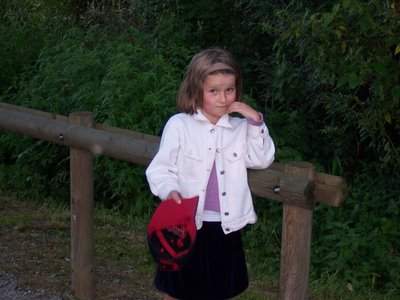 Malou with one of the boys' caps. She looks innocent enough, but I think that she's teasing one of them!
Malou with one of the boys' caps. She looks innocent enough, but I think that she's teasing one of them!
 Just one corner of the Vimy memorial that is visible
Just one corner of the Vimy memorial that is visible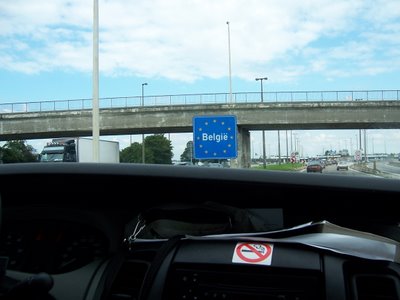
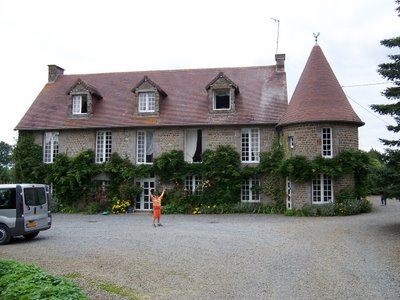


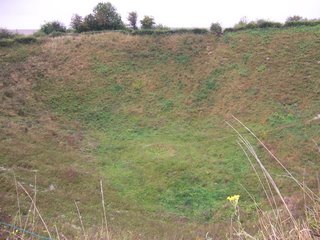
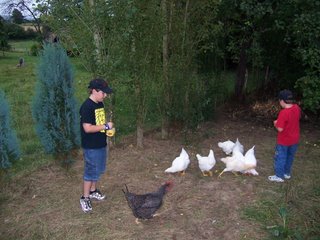
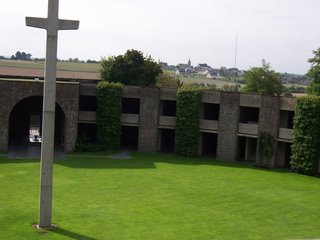
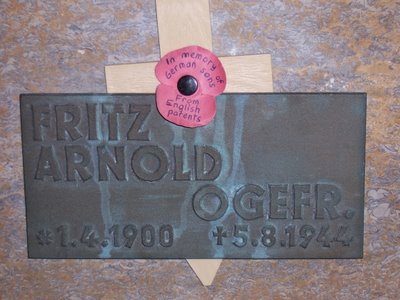
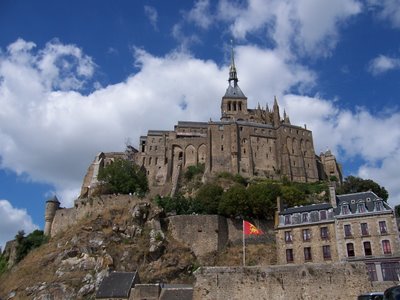
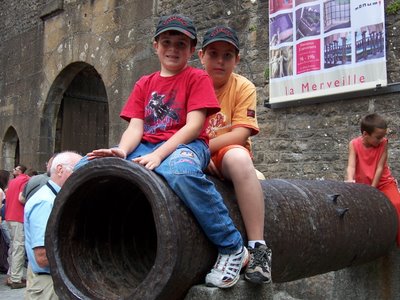
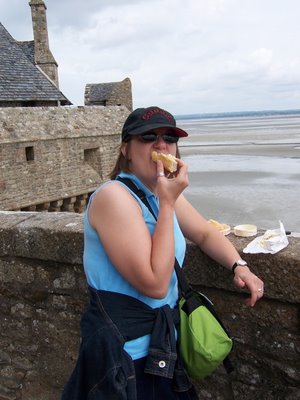 Nancy enjoying her french bread and camembert lunch on the ramparts.
Nancy enjoying her french bread and camembert lunch on the ramparts.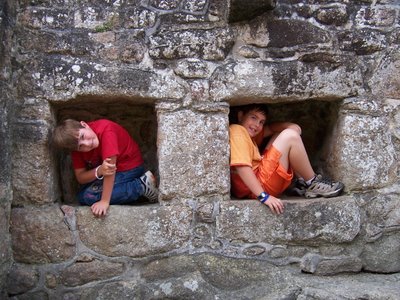
 Gideon needs to hold the crypt up!
Gideon needs to hold the crypt up!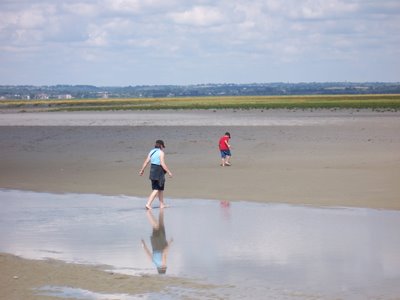
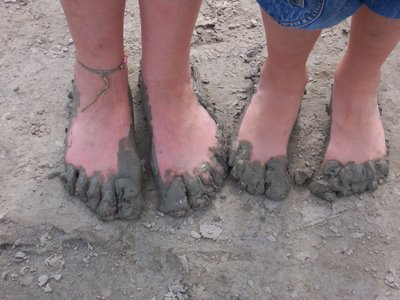
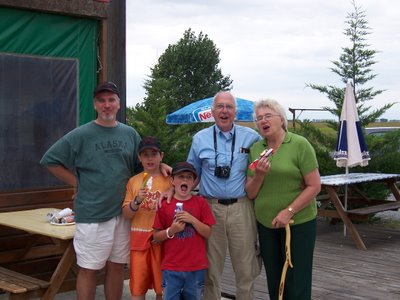 Our ice cream stop after a lot of walking at the Mont.
Our ice cream stop after a lot of walking at the Mont. The view of the Mont from our ice cream pitstop
The view of the Mont from our ice cream pitstop